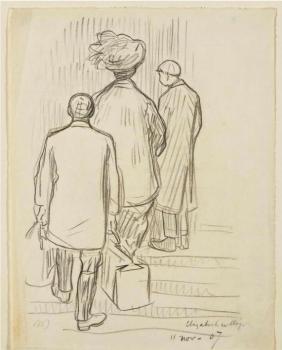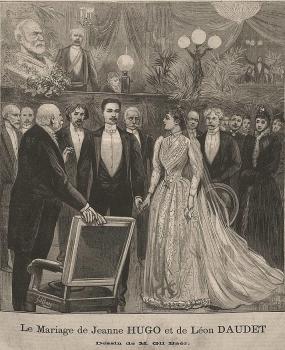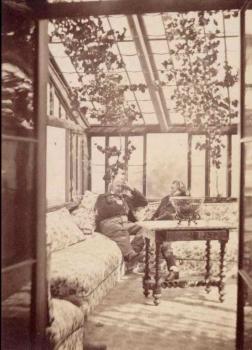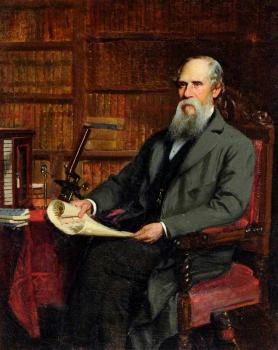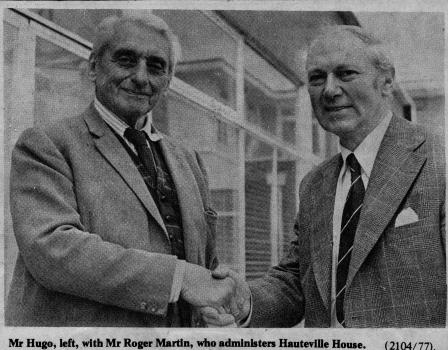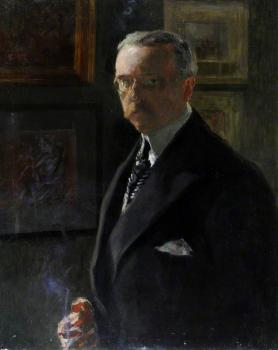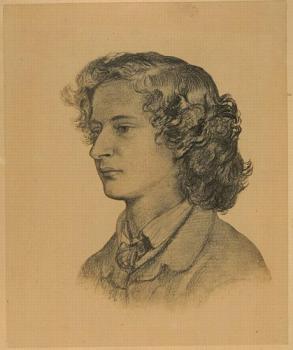10th May 2019
My school years at Elizabeth College, by Jean Hugo (1894-1984), from his autobiographical work, Le Regard de la mémoire, Paris: Actes Sud, 1983. Fond memories of Guernsey and characters such as 'Soapy Sam' and 'Peewee' are expressed in painterly language by the artist and great-grandson of Victor Hugo, who was a boarder at Elizabeth College. The illustration is of a drawing made by Jean's stepfather, René-Georges Hermann-Paul (1874-1940), of Jean, his mother Pauline, and the valet de chambre arriving for Jean's first term at Elizabeth College in 1907. This drawing was sold at Christie's, Paris, in 2012.By Dinah Bott. From the French.
10th May 2019
Victor Hugo's granddaughter Jeanne (1869-1941) was the apple of his eye. She knew Guernsey well. She married a childhood friend, the controversial author Léon Daudet (1867-1942), who had plenty to say about Victor Hugo - very little of it complimentary. The marriage did not last long.By Dinah Bott.
8th May 2019
From Léon Daudet's Ghosts and the Living, chapter 6. Léon Daudet was the son of the celebrated author, Alphonse Daudet. His father was a friend of Victor Hugo, especially in Hugo's later years. Léon was an intimate of the Hugo family; he was the same age as Hugo's grandchildren, Georges and Jeanne. Handsome and brilliant, he was Georges' best friend and married Jeanne when they were both just of age, but he was ever aware of his (comparative) poverty and his irascible and vicious character was such that the marriage did not last long. He began as a young devotee of Victor Hugo, but as he grew older his opinion as expressed in his writing changed to implacable hatred.By Dinah Bott.
25th April 2019
A poignant aspect of the tragic last voyage of 'the Polar Gentleman' and honorary Guernseyman, Jean-Baptiste Charcot. By Cédric Bail, assistant curator at Hauteville House. The article appears in English and French.
25th April 2019
Paul Stapfer, from his memoirs of his time in Guernsey with Victor Hugo, as reported in TP's Weekly, February 22, 1906.
25th April 2019
Hennet de Kesler and Victor Hugo dans le jardin d’hiver/in the conservatory, by Edmond Bacot (between 1858-1862), from the collection of Paris Musées, Maison de Victor Hugo, Hauteville HouseBy Dinah Bott.
4th April 2019
A philanthropist and island patriot, whose career, along with his childhood friend Frederick Mansell Allès, is ‘an illustration of the power of faith, hard work, and perseverance’ [Henri Boland, 1904.] The portrait is attributed to Frank Brookes and is in the collection of the Guernsey Museums and Art Galleries.
3rd April 2019
Jean Hugo was the great-grandson of Victor Hugo. A talented artist and theatre designer, he was a schoolboy at Elizabeth College in Guernsey and made later visits to the island, of which he was very fond, including attending the inauguration of Jean Boucher's celebrated statue of the poet in 1914. The Library has a signed copy of his autobiography, Le Regard de la mémoire, which he gave to Roger Martin, the curator of Hauteville House at the time of his visit in 1977; Roger Martin's ancestor was, coincidentally, one of Victor Hugo's 'poor children.' The photograph is courtesy of the Guernsey Press.By Dinah Bott.
3rd April 2019
By Dinah Bott.
22nd March 2019
From Charles Hugo's Chez Victor Hugo par un passant, [Victor Hugo at home, by a passer-by], Cadart & Luquet, Paris: 1864, published anonymously and decorated with 12 etchings by Maxime Lalanne. By Dinah Bott.
22nd March 2019
The poet Algernon Charles Swinburne visited Guernsey and Sark in order to follow in the footsteps of his hero and fellow poet, Victor Hugo. He fell in love with Sark and wrote poems describing his time there, so much so that he declared he would like to be king of the island. The portrait of a young Swinburne is by Rossetti — Swinburne had a mane of flaming red hair. It was drawn in August 1860 (image from the Rossetti Archive from a print held in the Delaware Art Museum). There is a selection of his Guernsey poems with reference to Victor Hugo at the bottom of this page. [By Dinah Bott]
13th March 2019
Execution of M J F Béasse, For the Crime of Infanticide. A handbill from 1830 in the Library collection, a gruesome souvenir of the notorious crime committed by a young French nobleman in the vicinty of Guernsey's Ruettes Brayes, translated from the original French.

